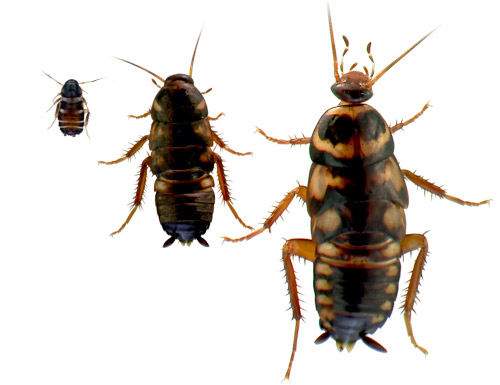Australian Cockroaches

The Australian cockroach is a common pest that can infest homes and buildings. It is not native to Australia but has spread to many parts of the world through human activity. This article will describe the appearance, behavior, diet, habitat, and reproduction of the Australian cockroach, as well as some prevention tips to keep them away.
## Appearance
The Australian cockroach is about 3 to 3.5 cm long, with a reddish-brown color and yellow markings on the head and wings. It has long antennae and spiny legs. The male has longer wings than the female, and can fly for short distances.
## Behavior
The Australian cockroach is nocturnal, meaning it is active at night and hides during the day. It prefers warm and humid environments, and can survive in temperatures up to 38°C. It is omnivorous, meaning it can eat both plant and animal matter. It can also digest cellulose, which is found in wood and paper.
## Diet
The Australian cockroach feeds on a variety of organic materials, such as fruits, vegetables, grains, bread, cheese, meat, pet food, leather, hair, books, and glue. It can also scavenge on dead insects and animals. It needs a source of water to survive, and can drink from leaks, drips, or condensation.
## Habitat
The Australian cockroach can be found in both urban and rural areas, especially in places where there is food and moisture. It can live indoors or outdoors, but prefers dark and secluded places. Some common hiding places are under sinks, behind appliances, in cabinets, in cracks and crevices, in attics, in basements, in sewers, in garbage bins, in compost heaps, and in mulch.
## Reproduction
The Australian cockroach reproduces by laying eggs in a protective case called an ootheca. The female can produce up to 20 oothecae in her lifetime, each containing about 16 eggs. The ootheca is usually carried by the female until it is ready to hatch, or it can be deposited in a safe location. The eggs hatch after about 40 days, and the nymphs emerge. The nymphs look like miniature adults, but are wingless and lighter in color. They go through several molts before reaching maturity, which can take up to a year.
## Prevention tips
The best way to prevent an infestation of Australian cockroaches is to eliminate their food, water, and shelter sources. Some practical steps are:
– Seal any gaps or cracks in walls, floors, doors, windows, pipes, or vents that could allow cockroaches to enter or hide.
– Clean up any spills or crumbs on floors, counters, tables, or appliances that could attract cockroaches.
– Store food in airtight containers or in the refrigerator.
– Dispose of garbage regularly and keep bins covered.
– Fix any leaks or drips that could provide water for cockroaches.
– Reduce humidity by using fans, dehumidifiers, or air conditioners.
– Remove any clutter or debris that could provide hiding places for cockroaches.
– Vacuum or sweep regularly to remove any cockroach eggs or droppings.
– Use natural pest control methods such as diatomaceous earth (DE), boric acid (BA), or essential oils (EO) to kill or repel cockroaches. These substances are safe for humans and pets but harmful for insects.
– Contact a professional exterminator if the infestation is severe or persistent.